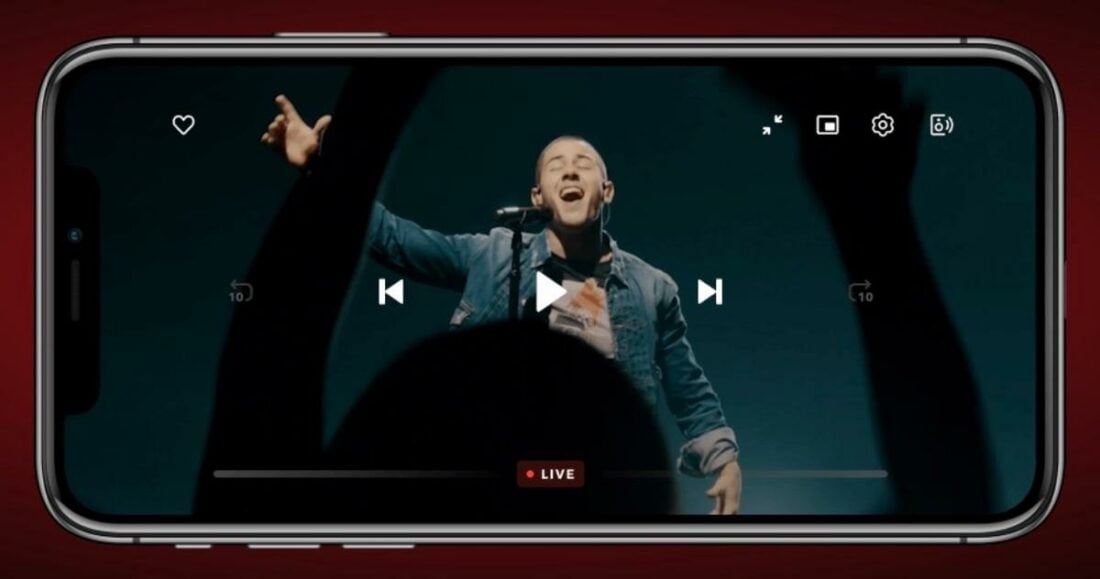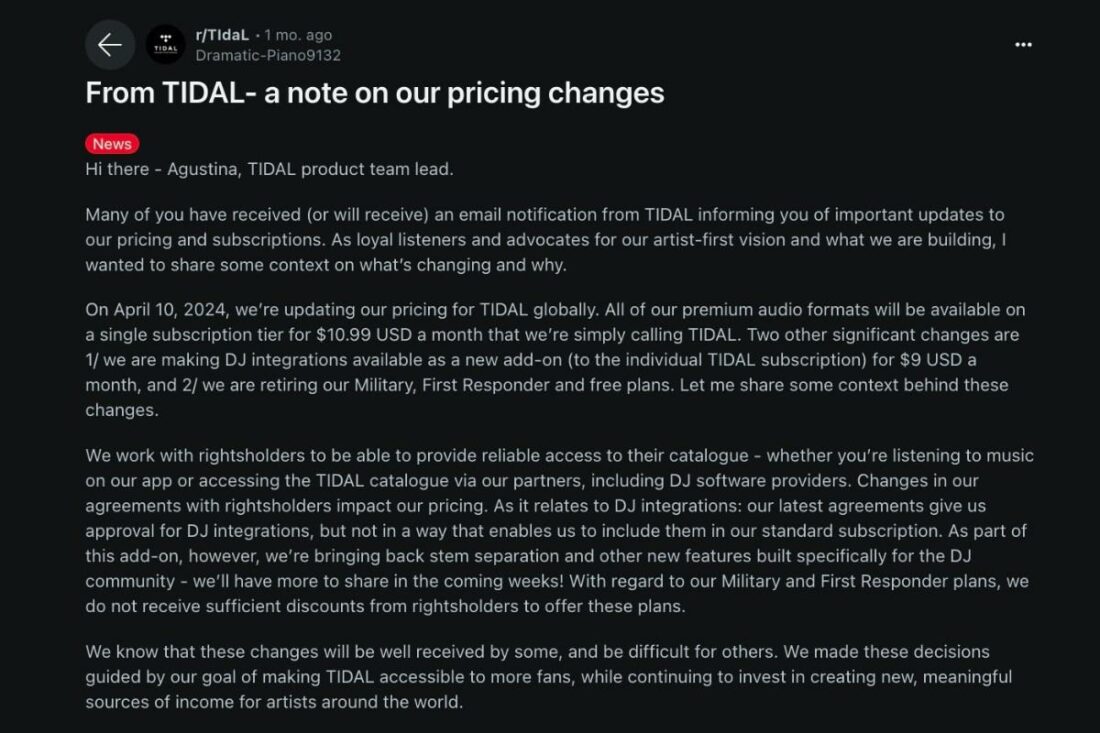Tidal’s budget-friendly rates are tuning out the competition.
Tidal has often been considered a runner-up to more popular platforms because of its higher cost. But the new pricing scheme has turned things around.
Since April 2024, Tidal has given users the benefits of its HiFi Plus plan at the same price as Spotify and other streaming platforms. This move puts itself at the top choice among anyone who values high-quality streaming.
Here are five key reasons why Tidal’s updated pricing scheme means you should give this platform a try.
1. Superior Sound Quality

When it comes to sound quality, Tidal is undeniably the king.
Tidal has three audio settings:
- Low: up to 320 kbps
- High: up to 16-bit, 44.1 kHz
- Max: up to 24-bit, 192 kHz
The Max setting uses HiRes Free Lossless Audio Codec (HiRes FLAC) to deliver the same sound quality that artists and producers hear in the studio. It includes different file types, starting with HiRes FLAC, MQA (Master Quality Authenticated), FLAC, and AAC (compressed audio).
To compare, Spotify streams at a maximum of 320 kbps using the Ogg Vorbis format, which is far from Tidal’s HiFi quality. The platform promised a HiFi tier in 2021, but it still hasn’t happened.
Other services like Apple Music, Amazon Music, and Qobuz also have lossless audio. But, our tests show that Tidal’s sound is still better.
For example, Apple Music often has a warmer and boomier sound that can slightly hide vocals and mid-ranges. Tidal’s sound stays more balanced, with tighter and cleaner lows that let vocals and other instruments shine.
2. More Advanced Audio Settings

Tidal takes audio enhancement to another level with its advanced listening modes.
Features like Exclusive Mode, Loud Normalization, and Passthrough MQA give users great control over their listening experience.
Exclusive Mode skips the operating system’s audio mixer, letting Tidal change the bitrate and sample rate for the best sound.
Loud Normalization keeps volume the same across tracks. And, Passthrough MQA lets both newer and older DACs play Tidal Master tracks without the MQA Core decoder getting in the way by turning it off.
These advanced settings make Tidal different from competitors, which don’t let you change as much as Tidal does.
3. Higher-Quality Content

Tidal has almost the same number of songs as other services. But they are better when it comes to videos.
Sure, platforms like YouTube Music and Spotify have full-length music videos. But, Tidal’s video collection, with over 650,000 videos, offers more value.
Its video collection gives music fans a deeper look at their favorite artists and music through documentaries and behind-the-scenes content. This includes music videos, original content, album commentaries, and documentaries.
The service’s original long articles embedded with the music also let users learn more about artists while listening to their songs.
4. Fairer Artist Treatment

Tidal pays artists more per stream than bigger competitors like Spotify, Apple Music, and YouTube Music. In fact, they have the second-highest pay-per-stream rate of all music streaming services.
To compare, Tidal’s pay-per-stream rate is around $0.013, while Spotify’s is $0.0032 and Apple Music’s is $0.01. This means an artist earns a dollar from 80 streams on Tidal. While they need a hundred or more on other platforms.
Tidal’s initiatives also show its commitment to supporting artists.
Last year, Tidal rolled out the “Artist Home” portal to establish a direct relationship with artists and build products and services solely for them.
The company also improved its Rising program that teaches artists about the music business, and gives them funding. It has expanded to help over 100 artists and has given out more than $800,000.
5. Better User Engagement

Tidal’s customer service is a breeze. The platform actively engages with its user community, providing updates and seeking feedback to improve the user experience continuously.
For instance, some members of Tidal’s product development teams have been seen active on platforms like the r/Tidal Subreddit. Tidal’s team communicates directly with users, sharing updates and context behind changes to the service.
This level of transparency and engagement fosters a sense of trust and loyalty among Tidal’s user base.
